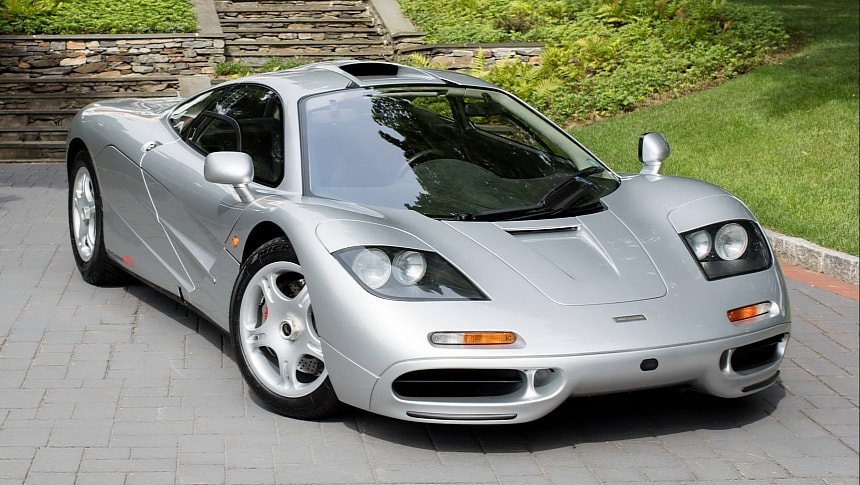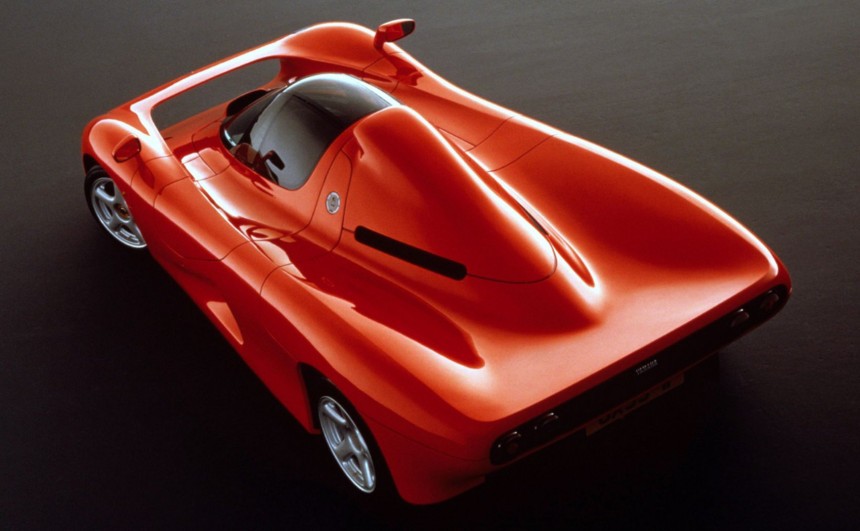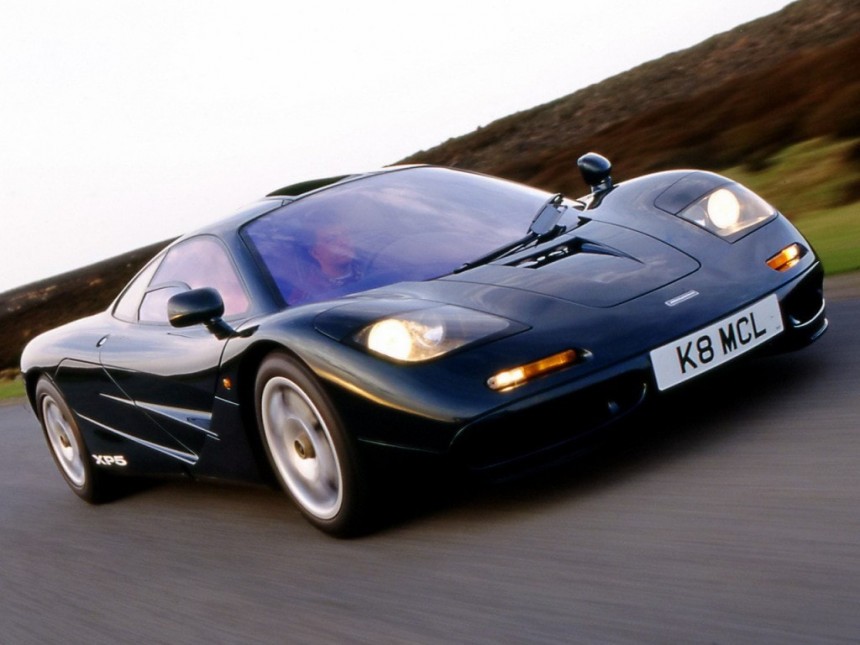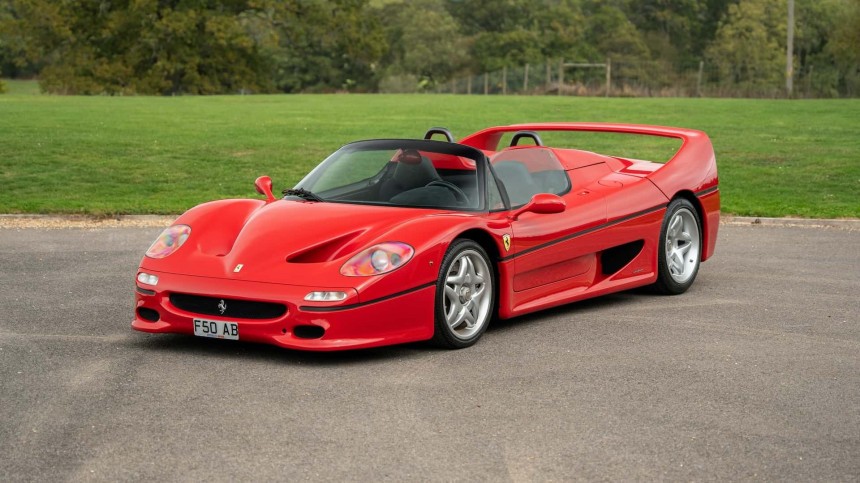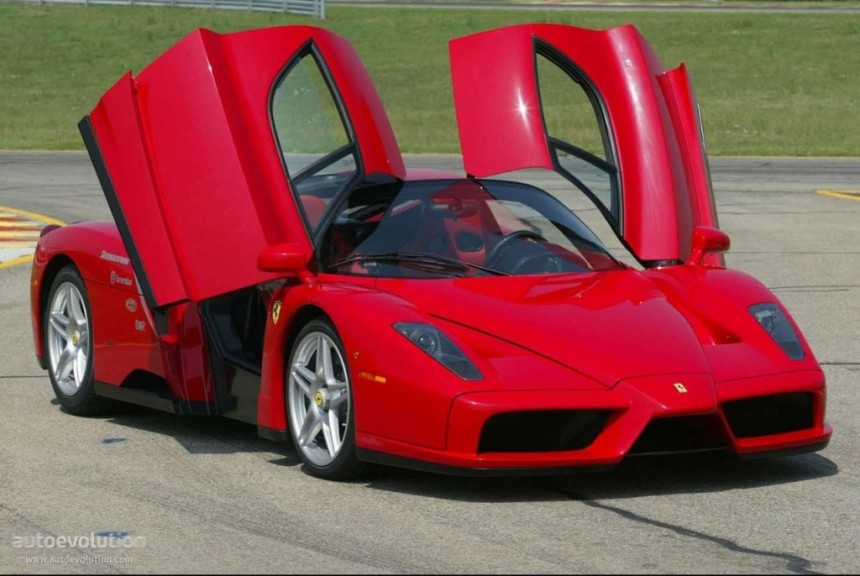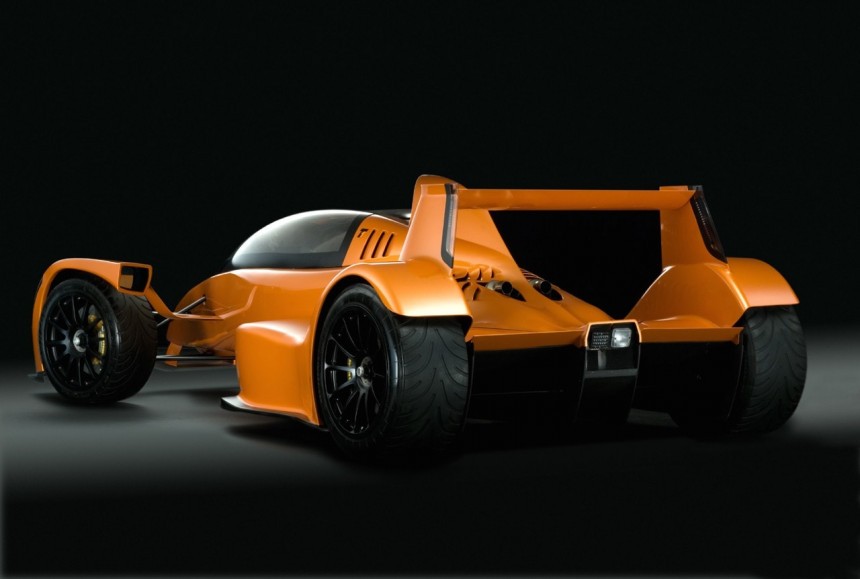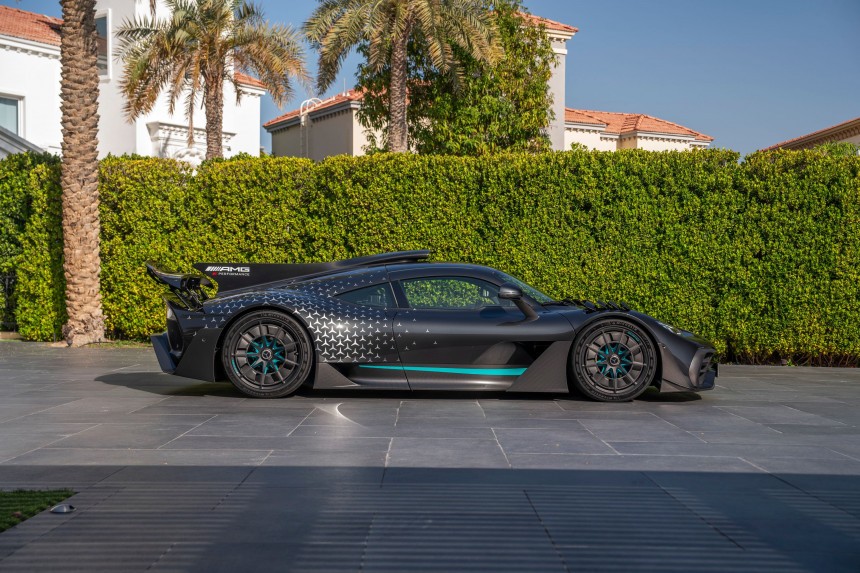Amidst the smokey tyre squeals and rush of photographers, something awe-inspiring was unveiled to the world at Goodwood on Friday.
Adrian Newey's pet project, the Red Bull RB17, which he has tirelessly worked on while juggling his Formula 1 commitments, promises to be one of the most ferocious hypercars ever built.
Under the sleek blue body, the RB17 is essentially an F1 car let off the leash. It is powered by a Cosworth-made V10 engine producing 990bhp and has a carbon fiber gearbox and chassis bringing the pinnacle of motorsport to the road.
As if this already doesn't make the mouth-water, the car features active suspension, a device banned from F1 since 1994, and Michelin Confidential tyres, giving the driver plenty of grip.
It won't be a car you see down the high street either, with only 50 produced, and they cost those lucky enough to own one £5.8 million.
But this also isn't the first hypercar designed to give the general public an F1 experience, and so we've picked out six of the best to ever do this.
In the 1980s, Japan was firmly in the grip of F1 fever, with the Japanese GP at Suzuka receiving thousands of ticket applications yearly.
Adding to the popularity was Japanese success on the track, with Honda engines powering every car that won a world championship from 1987 to 1991. Yamaha, the then dominant force of motorcycle racing, tried to do what Honda did by emulating their two-wheel success onto four.
They first entered F1 with the Zakspeed team in 1989 but didn't enjoy any success, only qualifying for two GPs all season. After a year's absence, Yamaha returned to F1 in 1991 with a V12 engine, teaming up with Brabham. However, results were still mediocre as the cash-strapped British team picked up three points.
In 1992, the company produced a road car using the V12, creating the 0x99-11 with a unique tandem two-seat arrangement. Sadly, that car never reached its full potential as it was made during Japan's economic downturn. Yamaha also worried they couldn't secure any customers to justify the $800,000 price tag.
Eventually, the project was cancelled in 1994, and only three prototypes of the 0x99-11 were built.
McLaren ruled F1 from the mid-1980s to the early 1990s, winning seven constructors' and drivers' champions with Niki Lauda, Alain Prost, and Ayrton Senna.
During their dominant 1988 season, where they won 15 out of 16 races, Gordon Murray, designer of the all-conquering Mp4-4, got to work sketching his idea for a unique three-seater supercar.
After successfully proposing the idea to then-McLaren boss Ron Dennis, Murray got to work on his ultimate road car. Its unique three-seat plan put the driver in the middle alongside two passenger seats, giving the owner a taste of what it was like to drive an F1 car.
Unlike its GP cars, which used Honda power, the F1 was powered by a BMW V12 engine that produced over 600 bhp and was protected by gold foil to prevent overheating. While the Ferrari F40 was bare-bones, the F1 combined speed and luxury, featuring amenities such as air conditioning, defrosting windscreens, a 10-disc CD stereo, and a first aid kit.
But if the driver wanted to open the taps, they would be treated to unmatched speed. The F1 reached a top speed of 240mph, making it the fastest production car ever.
Although never intended to race, several customers convinced McLaren to go racing with the F1. The gamble ultimately paid off as Paul Lanzante's team won the 1995 24 Hours of Le Mans with JJ Lehto, Yannick Dalmas, and Masanori Sekiya.
The 1990s were a lean period for Ferrari. Off-track, the company was involved in extensive infighting following the death of its founder, Enzo Ferrari. Meanwhile, on track, the team was falling behind the likes of Williams, McLaren, and Benetton.
But by 1995, times were changing. The F1 team recruited Michael Schumacher to drive for them in 1996, and the road car division launched a new supercar designed to bring Grand Prix power to the road.
Using the team's 1990 641 F1 car as inspiration, the F50 was produced to celebrate Ferrari's 50th birthday and didn't include power steering or an anti-lock braking system. However, it did include F1-style construction technology and aerodynamics, as evidenced by the car's substantial rear wing.
Unlike its predecessor, the F40, the F50 didn't achieve the same level of fanfare and only remained in production until 1997.
Seven years after the F50, Ferrari once again tried to bring GP racing to the road, creating the Enzo, named after the company's legendary founder.
The Enzo featured plenty of F1 technology, such as a sequential gearbox and carbon fiber-reinforced silicon carbide (C/SiC) ceramic composite disc brakes. Under the bonnet was a 6.0L V12 engine capable of producing 651bhp and a top speed of 218 mph.
An adjustment panel on the steering wheel added further realism, allowing the driver to change everything from the indicators to the traction control. It also had the best development driver in the world, Michael Schumacher, who brought his expertise to help iron out any issues before this thing got put into production.
Although the Enzo was difficult to see out of, it did have its road perks, with its active aerodynamics coming in handy over speed bumps.
Only 400 Enzos ever left the factory gates, and the owners' list included stars such as Schumacher, Nicolas Cage, Nick Mason, and even Pope John Paul ll.
Previously unknown, British company Caparo burst onto the scene with the sleek and fearsome T1.
The T1 was very much an F1 car with road car bodywork, only weighing 470 kilograms. It had a carbon fiber low-drag body design, an adjustable twin-element front wing and flaps, and a ground-effect diffuser.
Despite having two seats, it was a race car adapted for the roads. With a top speed of 205 mph and a 0-62 time of 2.5 seconds, there was no question it was quick.
But not long after its launch, the car received some unhelpful publicity. British touring car legend Jason Plato was burned when testing a prototype that caught fire, and Jeremy Clarkson had to make an emergency stop when a floor panel came loose during his test.
Due to these incidents and the following world economic recession, the T1 never kicked on, and only 15 cars were sold before Caparo entered administration in 2015.
Mercedes doesn't usually produce limited edition hypercars, but when they put their minds to making one, they can create something special.
The 1998 CLK GTR set a high bar on track by conquering the best in the world before going into limited production as a road car, capturing the imagination of every car enthusiast of the time.
Although the SLR McLaren was a good effort, it looks pedestrian compared to the company's new hypercar, the ONE.
The ONE is a modern road car designed with the best of modern-day F1 technology. It features DRS, an 8-speed single-clutch transmission, and a carbon-fiber body. But what separates this car from its rivals is what's under the bonnet. A modified version of Mercedes' V6 turbo hybrid F1 engine coupled with an MGU-H and MGU-K gives the driver an astounding 1,063 bhp under their right foot.
All the technology wizardry is useable via the F1 steering wheel. Meanwhile this thing is also incredibly light, weighing 1,695kg, and in turn hitting a top speed of 219 mph.
Only 275 will ever be sold, and all have already been snapped up by a clientele that includes Lewis Hamilton, his father Anthony, Nico Rosberg, David Coulthard, and Valtteri Bottas.
Under the sleek blue body, the RB17 is essentially an F1 car let off the leash. It is powered by a Cosworth-made V10 engine producing 990bhp and has a carbon fiber gearbox and chassis bringing the pinnacle of motorsport to the road.
As if this already doesn't make the mouth-water, the car features active suspension, a device banned from F1 since 1994, and Michelin Confidential tyres, giving the driver plenty of grip.
It won't be a car you see down the high street either, with only 50 produced, and they cost those lucky enough to own one £5.8 million.
But this also isn't the first hypercar designed to give the general public an F1 experience, and so we've picked out six of the best to ever do this.
1992 Yamaha 0x99-11
Adding to the popularity was Japanese success on the track, with Honda engines powering every car that won a world championship from 1987 to 1991. Yamaha, the then dominant force of motorcycle racing, tried to do what Honda did by emulating their two-wheel success onto four.
They first entered F1 with the Zakspeed team in 1989 but didn't enjoy any success, only qualifying for two GPs all season. After a year's absence, Yamaha returned to F1 in 1991 with a V12 engine, teaming up with Brabham. However, results were still mediocre as the cash-strapped British team picked up three points.
In 1992, the company produced a road car using the V12, creating the 0x99-11 with a unique tandem two-seat arrangement. Sadly, that car never reached its full potential as it was made during Japan's economic downturn. Yamaha also worried they couldn't secure any customers to justify the $800,000 price tag.
Eventually, the project was cancelled in 1994, and only three prototypes of the 0x99-11 were built.
1992 McLaren F1
During their dominant 1988 season, where they won 15 out of 16 races, Gordon Murray, designer of the all-conquering Mp4-4, got to work sketching his idea for a unique three-seater supercar.
After successfully proposing the idea to then-McLaren boss Ron Dennis, Murray got to work on his ultimate road car. Its unique three-seat plan put the driver in the middle alongside two passenger seats, giving the owner a taste of what it was like to drive an F1 car.
Unlike its GP cars, which used Honda power, the F1 was powered by a BMW V12 engine that produced over 600 bhp and was protected by gold foil to prevent overheating. While the Ferrari F40 was bare-bones, the F1 combined speed and luxury, featuring amenities such as air conditioning, defrosting windscreens, a 10-disc CD stereo, and a first aid kit.
But if the driver wanted to open the taps, they would be treated to unmatched speed. The F1 reached a top speed of 240mph, making it the fastest production car ever.
Although never intended to race, several customers convinced McLaren to go racing with the F1. The gamble ultimately paid off as Paul Lanzante's team won the 1995 24 Hours of Le Mans with JJ Lehto, Yannick Dalmas, and Masanori Sekiya.
1995 Ferrari F50
But by 1995, times were changing. The F1 team recruited Michael Schumacher to drive for them in 1996, and the road car division launched a new supercar designed to bring Grand Prix power to the road.
Using the team's 1990 641 F1 car as inspiration, the F50 was produced to celebrate Ferrari's 50th birthday and didn't include power steering or an anti-lock braking system. However, it did include F1-style construction technology and aerodynamics, as evidenced by the car's substantial rear wing.
Unlike its predecessor, the F40, the F50 didn't achieve the same level of fanfare and only remained in production until 1997.
2002 Ferrari Enzo
The Enzo featured plenty of F1 technology, such as a sequential gearbox and carbon fiber-reinforced silicon carbide (C/SiC) ceramic composite disc brakes. Under the bonnet was a 6.0L V12 engine capable of producing 651bhp and a top speed of 218 mph.
An adjustment panel on the steering wheel added further realism, allowing the driver to change everything from the indicators to the traction control. It also had the best development driver in the world, Michael Schumacher, who brought his expertise to help iron out any issues before this thing got put into production.
Although the Enzo was difficult to see out of, it did have its road perks, with its active aerodynamics coming in handy over speed bumps.
Only 400 Enzos ever left the factory gates, and the owners' list included stars such as Schumacher, Nicolas Cage, Nick Mason, and even Pope John Paul ll.
2007 Caparo T1
The T1 was very much an F1 car with road car bodywork, only weighing 470 kilograms. It had a carbon fiber low-drag body design, an adjustable twin-element front wing and flaps, and a ground-effect diffuser.
Despite having two seats, it was a race car adapted for the roads. With a top speed of 205 mph and a 0-62 time of 2.5 seconds, there was no question it was quick.
But not long after its launch, the car received some unhelpful publicity. British touring car legend Jason Plato was burned when testing a prototype that caught fire, and Jeremy Clarkson had to make an emergency stop when a floor panel came loose during his test.
Due to these incidents and the following world economic recession, the T1 never kicked on, and only 15 cars were sold before Caparo entered administration in 2015.
2022 Mercedes-AMG ONE
The 1998 CLK GTR set a high bar on track by conquering the best in the world before going into limited production as a road car, capturing the imagination of every car enthusiast of the time.
Although the SLR McLaren was a good effort, it looks pedestrian compared to the company's new hypercar, the ONE.
The ONE is a modern road car designed with the best of modern-day F1 technology. It features DRS, an 8-speed single-clutch transmission, and a carbon-fiber body. But what separates this car from its rivals is what's under the bonnet. A modified version of Mercedes' V6 turbo hybrid F1 engine coupled with an MGU-H and MGU-K gives the driver an astounding 1,063 bhp under their right foot.
All the technology wizardry is useable via the F1 steering wheel. Meanwhile this thing is also incredibly light, weighing 1,695kg, and in turn hitting a top speed of 219 mph.
Only 275 will ever be sold, and all have already been snapped up by a clientele that includes Lewis Hamilton, his father Anthony, Nico Rosberg, David Coulthard, and Valtteri Bottas.
